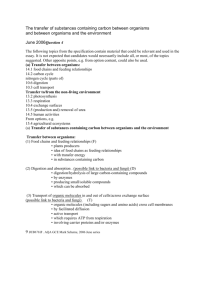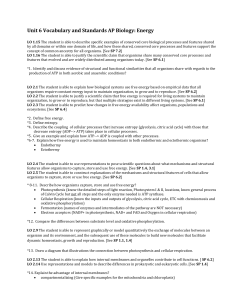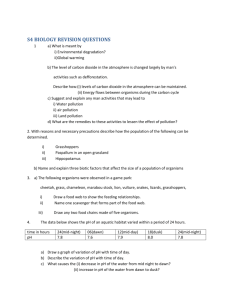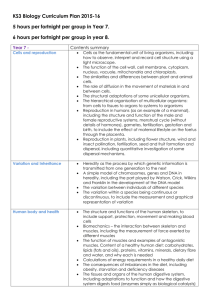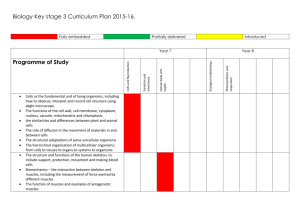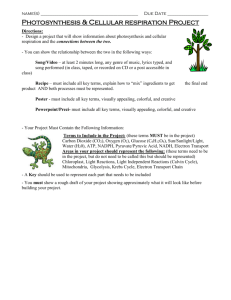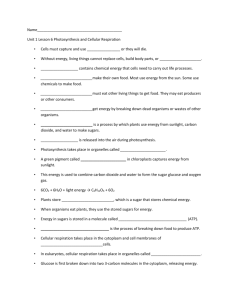Ecology and Energy In Ecosystems Study Guide
advertisement
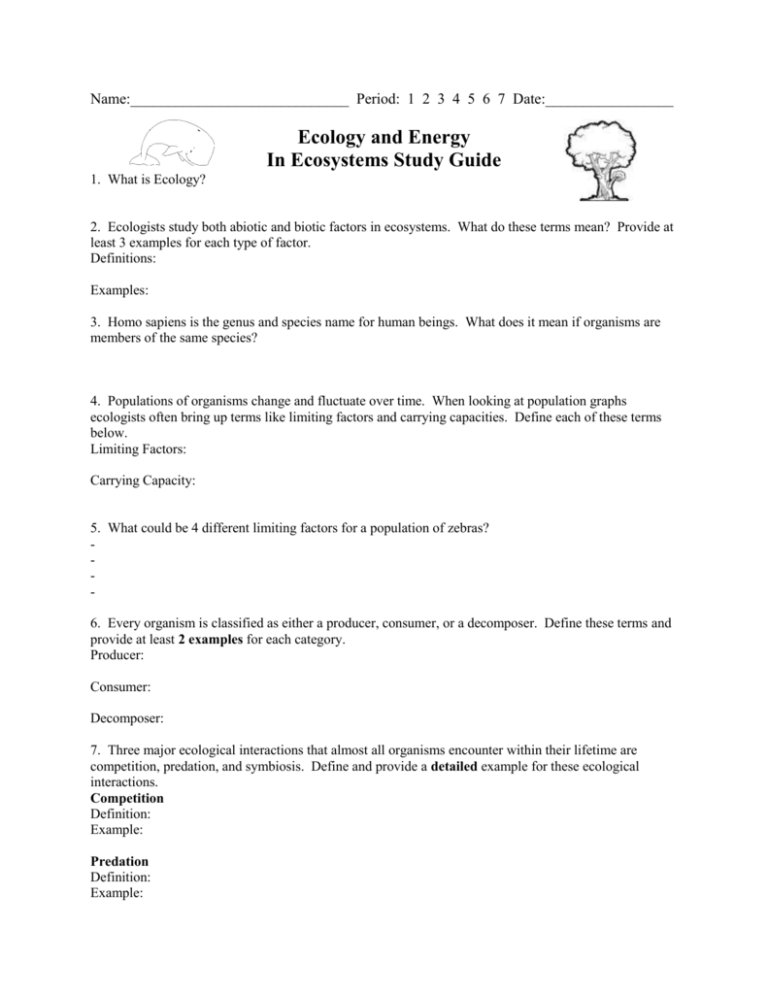
Name:_____________________________ Period: 1 2 3 4 5 6 7 Date:_________________ Ecology and Energy In Ecosystems Study Guide 1. What is Ecology? 2. Ecologists study both abiotic and biotic factors in ecosystems. What do these terms mean? Provide at least 3 examples for each type of factor. Definitions: Examples: 3. Homo sapiens is the genus and species name for human beings. What does it mean if organisms are members of the same species? 4. Populations of organisms change and fluctuate over time. When looking at population graphs ecologists often bring up terms like limiting factors and carrying capacities. Define each of these terms below. Limiting Factors: Carrying Capacity: 5. What could be 4 different limiting factors for a population of zebras? 6. Every organism is classified as either a producer, consumer, or a decomposer. Define these terms and provide at least 2 examples for each category. Producer: Consumer: Decomposer: 7. Three major ecological interactions that almost all organisms encounter within their lifetime are competition, predation, and symbiosis. Define and provide a detailed example for these ecological interactions. Competition Definition: Example: Predation Definition: Example: Symbiosis Definition: Example: 8. There are three different types of symbiotic interactions that organisms have they are mutualism, commensalism, and parasitism. Describe and provide a detailed example for these types of symbiosis. Mutualism Definition: Example: Commensalism: Definition: Example: Parasitism: Definition: Example: 9. What is a food web? 10. Write the names of five organisms that could be in a food chain together. Label each organism as either a producer, consumer (primary, secondary, etc.), or decomposer. 11. What is energy? Is energy made up of atoms? 12. Define and provide examples for the following types of energy: mechanical, chemical, solar, potential, thermal, and kinetic. A. Mechanical Energy: Definition: Example: B. Chemical Energy: Definition: Example: C. Solar Energy: Definition: Example: D. Potential Energy: Definition: Example: E. Thermal Energy: Definition: Example: F. Kinetic Energy: Definition: Example: 13. Provide detailed definitions for photosynthesis and cellular respiration? Photosynthesis: Cellular Respiration: 14. What is the chemical equation for photosynthesis? Identify the products and the reactants. 15. What is the chemical equation for cellular respiration? Identify the products and the reactants. 16. List 4 reasons why photosynthesis is so important? 17. Photosynthesis occurs within the _____________ of plant cells. Cellular respiration occurs within the ____________ of animal cells. 18. The ____________ are tiny holes or openings in leaves that allow plants to exchange different gasses with the atmosphere. 19. What does ATP stand for and what is it? 20. Why are photosynthesis and cellular respiration considered opposite reactions to one another? List at least 4 reasons. 21. In the chemical process of ____________________ a large molecule is created from smaller molecules. In the chemical process of ___________________ small molecules are created from a larger molecule. 22. Although humans don’t directly perform photosynthesis we certainly use solar energy indirectly to give us mechanical and thermal energy. Describe why it would be factual correct to say that humans use solar energy to provide energy for their bodies. (3 complete sentences needed) 23. What is an energy pyramid? What is the 10% law? Energy Pyramid: 10% Law: 24. How much energy does a tertiary consumer get from the “original energy” that a producer had? _______% How much energy does a secondary consumer get from the energy that was available to a primary consumer? _______% 25. Describe some of these negative impacts that humans have had on environments. Acid Rain: Clear Cutting: Habitat Destruction: Urban Sprawl: Coal and Oil Use: 26. What are some things humans can do to make up for some of the negative impacts we have on our environment? How can we reduce our carbon footprint? List at least 4 solutions below. A. C. B. D. 27. Why is it important that organisms do not go extinct? Use examples from your “Is Extinction an Option Brochure.” 28. Why is it important that multiple scientists from different backgrounds study the same ecosystem? Provide an example of how two scientists might help one another research an ecosystem. 29. We watched the movie “The Lorax” which outlined the delicate balance between technological advancements and taking care of our world. What did you learn about the relationship between these two variables? (2-3 complete sentences needed) 30. During our “Feeding Yeast Lab” we learned about fermentation and lactic acid fermentation. How are these chemical processes related to cellular respiration? Fermentation: Lactic Acid Fermentation: 31. During our “Just a Cheeseburger Assignment” what did you learn about the types of organisms involved in the process of making a cheeseburger? Where do these organisms get their energy from? Types of organisms: Where their energy comes from? 32. All science articles have both observations and inferences in them. How can you use that knowledge to decide whether or not a science article you read is “accurate” or “inaccurate?”




